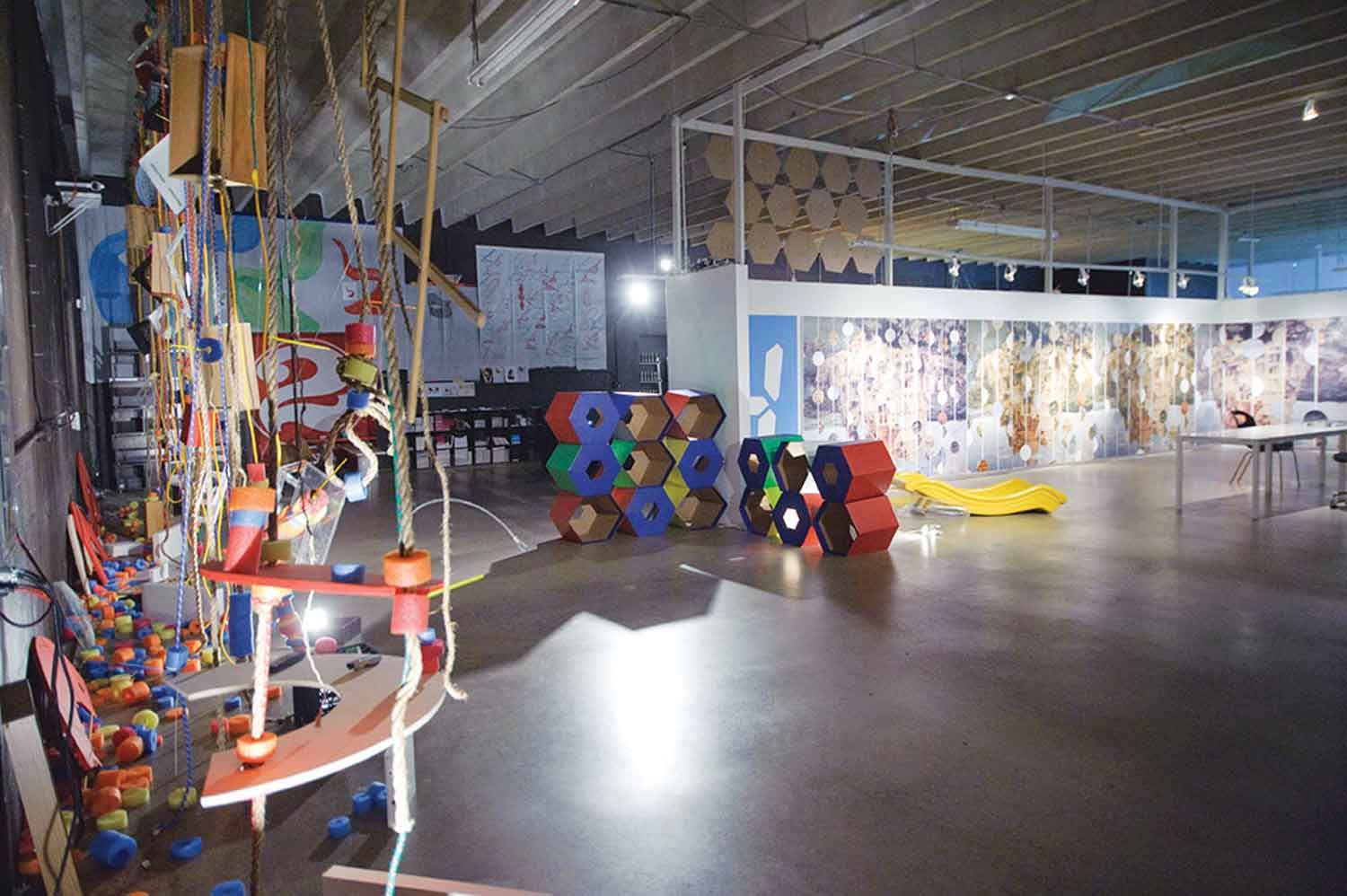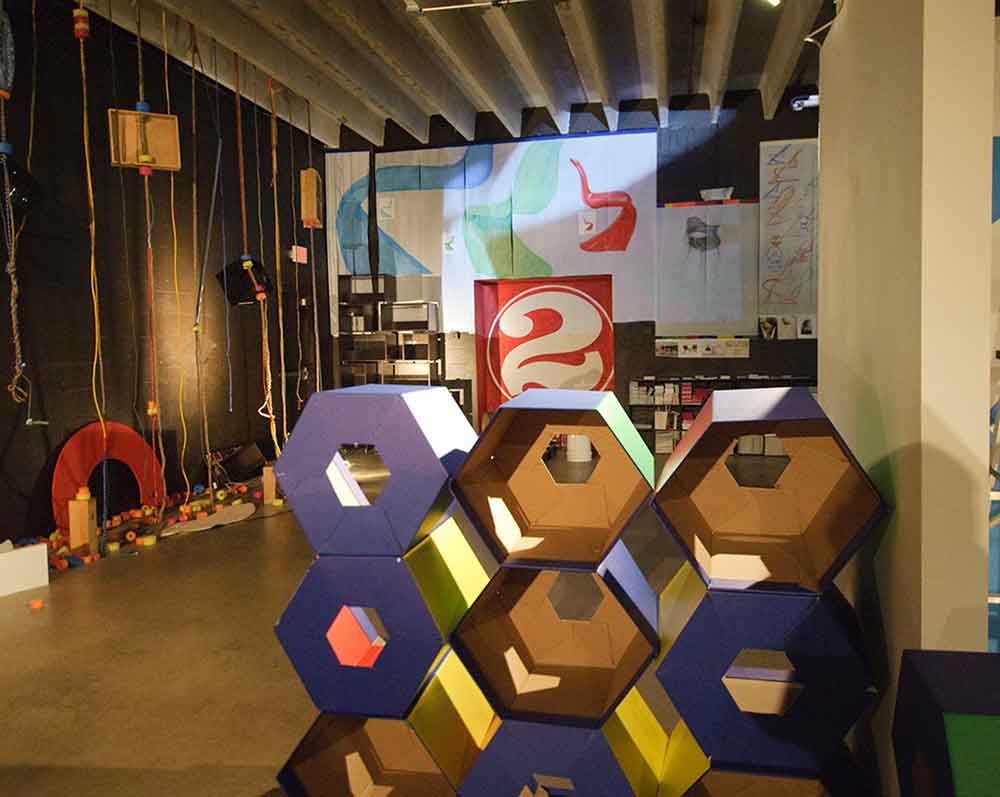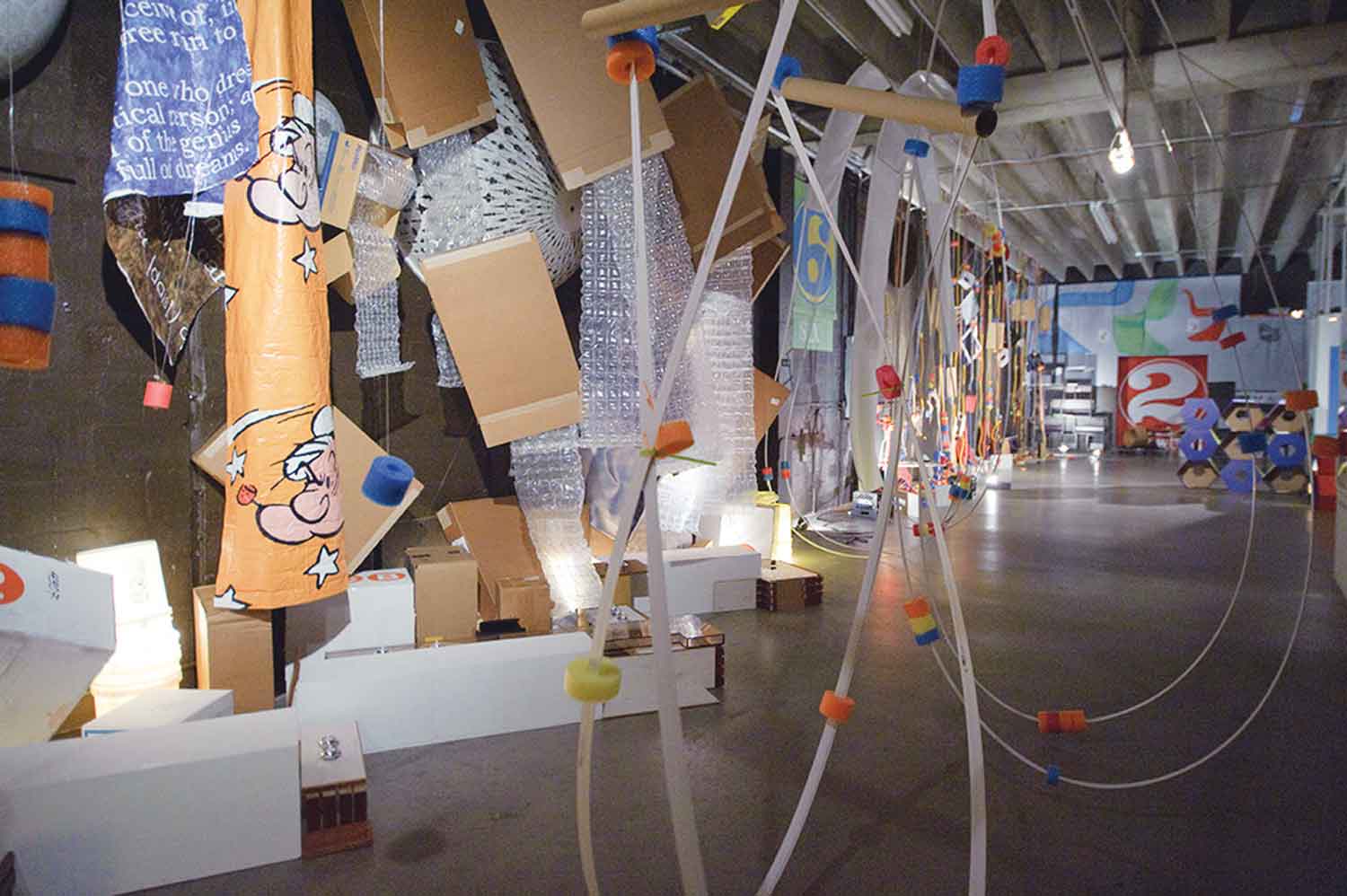« Reviews
Consuelo Castañeda: Recycle
Hardcore Art Contemporary Space - Miami
By Raisa Clavijo
For three months, Consuelo Castañeda’s project Recycle was exhibited at Hardcore Art Contemporary Space. This project constitutes a work in progress that began with Castañeda’s prior projects, such as For Rent (Americas Society, New York, 2011) and her contribution to “New Works Miami 2013″ (Miami Art Museum).

Consuelo Castañeda, Recycle, (2012-2013), site-specific installation, mixed media, variable dimensions. All images are courtesy of the artist and Hardcore Art Contemporary Space.
In Recycle, Castañeda continues a process of gathering and reexpressing those codes that the artist has been discovering as a “collector of cultural references” and an active observer of her environment. In Recycle, images, sounds, books, documents and discards from a consumer society, fragments from the history of art and fragments from the artist’s experiences, are mixed together. It is a work of art that is not only open to different interpretations, but also open to being modified and completed by visitors.
Her strategy reminds us of Nicolas Bourriad’s statements in Postproduction (2002) regarding the artist being seen as a DJ or content programmer whose function is to identify cultural objects and symbols that he or she will then insert and repurpose in other contexts.
It is no accident that Castañeda presents a work of this type; let us recall her interventions in the 1980s and 1990s of the works of Perugino, Hokusai, Joseph Kosuth, Barbara Kruger, and other well-known figures in the history of universal art. Also, For Rent at the Americas Society began with the premise of recycling cultural symbols. On that occasion the project consisted of creating a visual chronology between the history of the Americas Society, established in 1968, and the personal history of the artist, a resemanticized chronology that ranges from the Cold War through the emergence of postnational discourse in the global world. For Rent included the piece Homage to Gego, a tribute materialized in the reproduction of Reticularea, presented by Gego at the Americas Society in 1969. Castañeda reproduced the piece on a gigantic scale, using assembled straws.1
Recycle constituted a work full of cultural references, which in turn dialogued amongst themselves on a symbolic plane. Castañeda created a space melding zones of rest and relaxation, game areas and reading rooms. On computers displayed in the exhibition space, the artist placed at the disposal of the public all information and all bibliographical, visual and sound references that she compiled for this project (she had already proposed a documentation center as part of “New Works” at the Miami Art Museum). Pieces previously created by this artist alternated next to these archives, including mock-ups of works and enormous installations made from recycled trash. In this fashion, hundreds of references were gathered in one project, all pointing to different moments in her life-a view of the ocean from her house on Miami Beach-as well as to such diverse referents as the Golden Ratio by Fibonacci, Kepler’s theories about the movement of planets, the structure of DNA proposed by Crick and Watson, the structure of the atom, the futuristic geodesic domes of Richard Buckminster Fuller, Tatlin’s The Monument to the Third International (1920), the architecture of Morris Lapidus and a reinterpretation of Brueghel’s Tower of Babel, among many other “cultural citations,” which reaffirm how the recycling of forms and models that characterizes our contemporaneity has been a constant in the history of humanity.
Recycle questions features traditionally associated with artistic production, such as originality, permanence and the materiality of a work of art. Here the work of art is an entity that clearly shows a process of development that does not cease with the destruction of the installation. When the exposition is dismantled, the work lives on recorded in images and documents. All of the objects, references and experiences gathered from each mise-en-scène become part of an infinite archive that comprises the piece. In Recycle, the work itself is the process of production, an uninterrupted process enriched by the participation of the viewer. In this way, the artist functions as a producer of knowledge, a provoker, whose actions invite reflection and the generation of new ideas and processes.
Recycle will continue in Castañeda’s future projects, including the one she will present at the Bienal del Sur in April, during which she will work with materials and cultural codes gathered in Panama City, site of the biennial.
(December 3, 2012 - March 3, 2013)
Notes
1. Homage to Gego was also presented at Hardcore Art Contemporary Space in December 2011.
Filed Under: Reviews





































Leave a Reply
You must be logged in to post a comment.